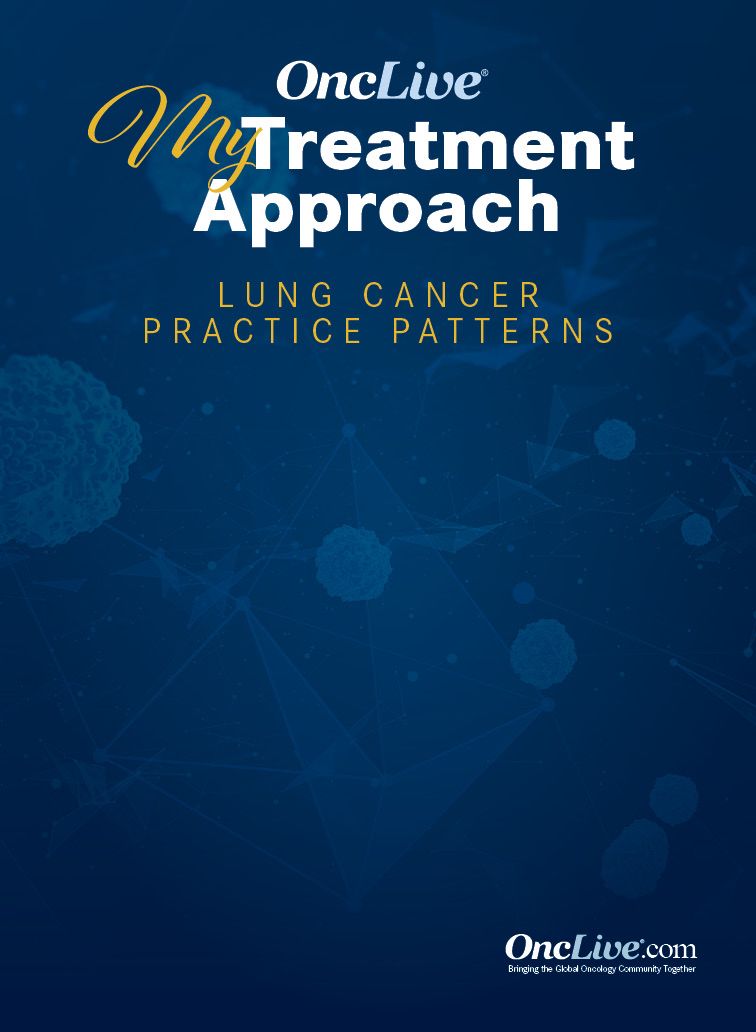Publication
Article
Supplements and Featured Publications
Quadri Calls for Integration of Surgery Into Evolving Locally Advanced Lung Cancer Paradigm
Author(s):
Syed M. Quadri, MD, discusses the role of surgery in early-stage and locally advanced lung cancer, as well future directions with robotic and minimally invasive surgery.
Syed M. Quadri, MD

Surgery has become a curative treatment approach for patients with early-stage lung cancer, while the emergence of novel approaches in the locally advanced setting have allowed for more patients to undergo these procedures that they may not have been eligible for in the past, according to Syed M. Quadri, MD.
“In the past, these patients [with locally advanced disease] were not eligible for surgery, [but now] they are becoming much less advanced. These patients have gone from having disease that was unresectable to potentially resectable. There is a tremendous amount of potential,” Quadri said. “This is why it is important for surgeons to be involved in the care of these patients. Rather than trying multiple interventions with molecular treatments, which all work a little bit, the key is to integrate surgery within that paradigm so that molecular treatments are started and then patients can go on to receive definitive treatment.”
In an interview with OncLive®, Quadri, a thoracic surgeon at Lahey Hospital & Medical Center, and a clinical associate professor of surgery at Tufts University School of Medicine, discussed the role of surgery in early-stage and locally advanced lung cancer, as well future directions with robotic and minimally invasive surgery.
OncLive®: What role does surgery play in early-stage lung cancer?
Quadri: Early-stage lung cancer is the best stage to find [disease], which is something that has been a challenge in the past. Patients never present with early-stage lung cancer because they do not have symptoms; this is a very silent cancer. Often, through screening and modalities, it is incidentally found, because the patient ends up having a CAT scan for another reason or they are part of a screening program.
The role of surgery in early lung cancer is vital because it is curative. Before, we used to have 5-year survival [rates ranging from] 60% to 70%. [Now,] we know that if we have a small, early lung cancer, 5-year survival is more than 90%. That is breathtaking, because not that long ago, that was never a normal thing to tell patients.
How is surgery being utilized in the locally advanced setting?
The locally advanced setting is a really interesting space right now. Oncology specialists would know better than I about the number of treatments that have come on board for lung cancer that is either locally or distant advanced. A tremendous number of mutations [have been identified], EGFR being one of the best known, as well as PD-L1 expression, and oncologists have learned to target them. Where this is relevant to surgery is that this is turning many patients with locally advanced [disease] into [those who are] operable.
You were recently an author on a paper discussing robotic assistance for complex pulmonary resections such as segmentectomy and sleeve lobectomy. What makes this approach unique compared with other surgical approaches?
The way we do surgery has completely changed. Even in the 20 years since I was in residency, the approach has changed and the technique has changed; robotics has been a huge part of that. We now do operations and we lose less blood than the anesthesiologist does. We would routinely make 4 little incisions, not much bigger than the size of a pencil, and go in between the ribs.
The instruments [we use] are 8 millimeters in size, and I take out an entire lobe, an entire segment, and the patient has lost 10 cc or 20 cc of blood. Ten years ago, the normal, acceptable blood loss after a thoracotomy, or even a video-assisted thoracoscopic surgery lung resection, was probably 300 cc to 400 cc. To [put this in perspective], when someone goes to get their blood taken for routine tests, they lose about 10 cc. It is remarkable [how far we have come].
Which patients would be candidates for robotic surgery?
Patients with early lung cancer would definitely be candidates for minimally invasive, robotic surgery. These patients generally have small tumors, [which] are easier to [remove] with minimally invasive techniques. [However], we are really extending the boundaries for this. My partners and I have [operated on] patients with large tumors and with tumors that have been treated with neoadjuvant chemotherapy, radiotherapy, and immunotherapy. These are much more complicated, and these are advanced, minimally invasive cases. We are at the point now, where we are doing very advanced cases. [For] almost every case, [we] should be [try to do] a minimally invasive approach. [We can] tell the patient that there is a good chance we will be able to do it, but if we can’t, we will convert and do the traditional thoracotomy.
You were also an author on another recent study that reviewed a lung cancer screening program to determine the rate of surgery and invasive procedures for nonmalignant disease. What was learned from this?
An important consideration when screening is that we do no harm. Obviously, anytime we operate on a patient there is a risk for harm; there is a risk for a bad outcome. A concern that people had about lung cancer screenings were [that it would pick up something that is] not necessarily going to kill the patient and that by operating and intervening [we are] potentially causing more harm than benefit. This study showed that of the thousands of patients we screen, the number of those who had interventions for benign disease was exceedingly low. The number of patients that had bad outcomes was also exceedingly low, meaning screening works. If you pick the right population, you look for lung cancer, and you find it, your outcomes are better. Your cure for cancer is also better, and your [risk of] harm [is] very low.
What are you doing in practice to improve how you work up patients?
We are doing more cardiopulmonary exercise tests, and we are doing stress echoes to figure out who is or is not operable. That is relevant is because we are extending the boundaries of who we would normally operate on. For example, I did an operation on a patient who was 88 years of age on Monday. He went home on Tuesday, and I did a left upper lobe segmentectomy, which is a complicated operation. Within 28 hours of operation, this patient said, ‘I don't need to stay another day. I have everything I need at home, and I'm better off at home.’ That has really extended the boundaries, because we are able to do better testing to figure out who is and is not a candidate for surgery and pick patients who we know are going to do well.
What role does staging play when determining whether a patient should undergo surgery?
Lung cancer staging has come a long way. We are now routinely doing PET scans and CT scans, which is not that groundbreaking, but we are [also] doing more endobronchial ultrasound, endoesophageal ultrasound, and cervical mediastinoscopy. Those 3 modalities have allowed us to completely stage the mediastinum and figure out which patients would benefit. At the end of the day, if a patient has metastatic disease in the lymph nodes, this is now a locally advanced situation, these patients should be treated with neoadjuvant chemotherapy, and perhaps immunotherapy. There is a lot of exciting work being done in this area, but they need more treatment than just surgery.









